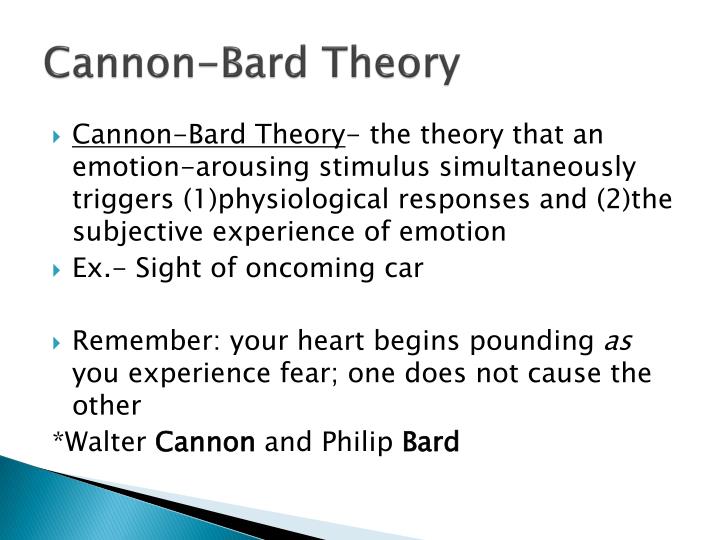
The James-Lange theory of emotions: A critical examination and an alternative theory.

One of the main criticisms it has received is that it gives too much importance to the thalamus when explaining emotions.Įven though research does show that the thalamus is involved in the experience of emotions, other brain regions not considered by the theory also play an important part.Īccording to a literature review published in 2014, one major flaw in the Cannon-Bard theory is that it doesn’t take into account that a person’s physical reactions can, in fact, influence emotional experiences. The Cannon-Bard theory has been challenged multiple times. Is the Cannon-Bard theory accepted nowadays? You feel a sudden jolt of fear as your heart beats fast and you scream and run after your baby. Suddenly, you see your little one run after a ball that’s heading in the direction of a nearby road. You’re spending some time in the park with your child. You hear the knock on your door and immediately experience butterflies in your stomach as you feel excited and happy. You have a first date with someone you may like romantically. At the same time, your heart starts beating much faster and you slam on the brakes to avoid the deer. You feel panic at the possibility of hitting the deer and causing damage to the car or injury to yourself. You experience the emotion of fear and a physical response to the threat at the same time.

Picture driving down the road at night, when a deer runs out in front of your car. Here are a few examples of how the Cannon-Bard theory would explain emotional responses in real-world situations. Instead, both responses to an external stimulus happen at the same time. In other words, the theory says that it’s not the experiencing of the emotion that causes the reaction in your body or vice versa. Both happened independently at the same time as a response to the stimulus (the spider). This theory suggests that external (outside the body) stimulation - negative or positive - can trigger both an emotional and physical response that starts in the thalamus.įor example, if you have a fear of spiders, seeing one crawling near your bed may cause you to feel fear and start trembling at the same time.Īccording to the Cannon-Bard theory, you’re not trembling because of the fear you feel and you’re not feeling fear because your body started trembling. The Cannon-Bard theory is also known as the thalamic theory of emotion related to the thalamus, a part of your brain related to sensory and motor functions. Cannon and Philip Bard developed the theory in 1927 as a direct response to the then-popular James-Lange theory of emotion. Basics of the Cannon-Bard theory of emotion


 0 kommentar(er)
0 kommentar(er)
